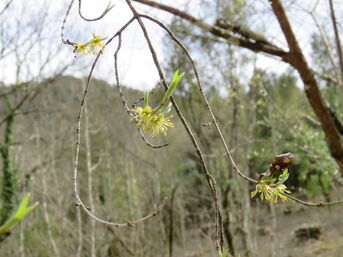
Not the easy way for us, we like adventure, and solitude. So we do not cross the Ponte della Pia, a medieval bridge spanning the Rosia, the short route monks took to the hermitage of Santa Lucia. On a moonless night you may encounter a veiled figure, a Sienese lady murdered by her husband. She appears in Dante’s Divine Comedy where she begs the poet to pray for her soul, prayers to release her from purgatory. She is Pia de’ Tolomei and Ponte della Pia is said to be named after her.
Riserva Naturale Alta Merse. I’m a nature writer in new territory so there are challenges, with much to discover. The woods of Tuscany have a distinctive character. There are evergreen trees and shrubs. Tall dark pines pattern the skyline. It’s almost April but the woodland floor is dull gold with fallen leaves from deciduous trees, Turkey oak, Holm oak, a range of oak species, and hybrids. Chestnut groves are a feature of Tuscany and there’s a renewed focus on their management. Sweet chestnut is quick-growing so coppicing chestnut allows slower-growing oak to reach full size and it preserves a much richer and more biodiverse environment. Timber used to build the Duomo of Siena will have come from these woods. In autumn there are festivals celebrating the chestnut groves and their fruit.
Castagne o marroni- scoprione le differenze
Visit Monte Amiata in autumn, prized for its chestnut groves with documents charting their management dating back to 1611.
At Eastertide the woods of Alta Merse reawaken with the coming of spring. Green woodpecker and jay are vocal. Chiff chaff and wood warbler sing high in the trees and there’s birdsong I don’t recognise. It’s the season of tree-flowers, and catkins. Tree heather is in flower, attracting tiny bright blue butterflies.
Leaving the track we head steeply down through the wild wood seeking the Eremo of Santa Lucia. There are rough earthen steps on what feels like a forgotten way with a sense of solitude. Leaf-litter is of oak and chestnut with a scatter of chestnut husks. An ancient tree looms before us, like something Dante might meet in the underworld, in purgatory. It’s a grotesque, writhing in agony, and long dead. Vestiges of bark suggest chestnut. its several trunks tell of coppicing long ago. Limbs twist and contort about a hollowed-out centre. We creep inside for a merry interlude as tree spirits.
Immersed in the wild wood, I lose all sense of time and lunch is whenever our adventure is achieved. It’s a peaceful spot, an olive grove with vistas and an abundance of the lovely broad-leaved anemone.
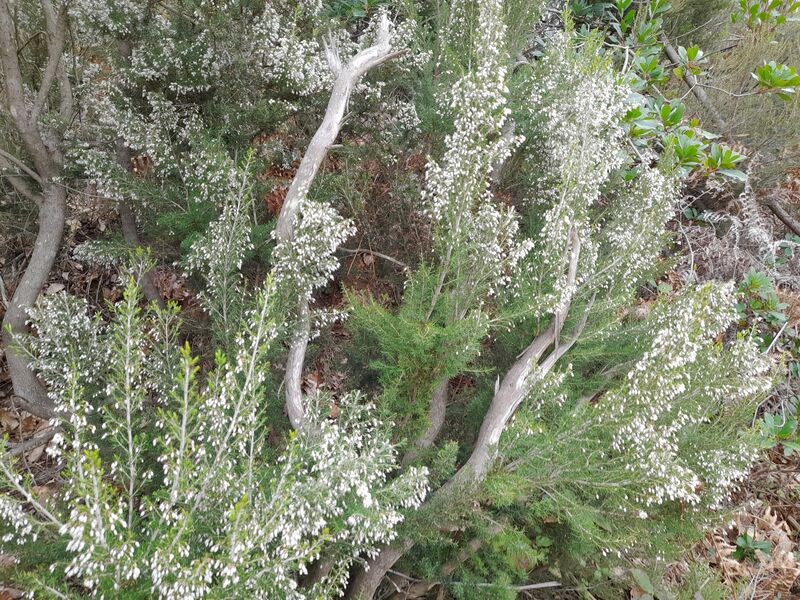
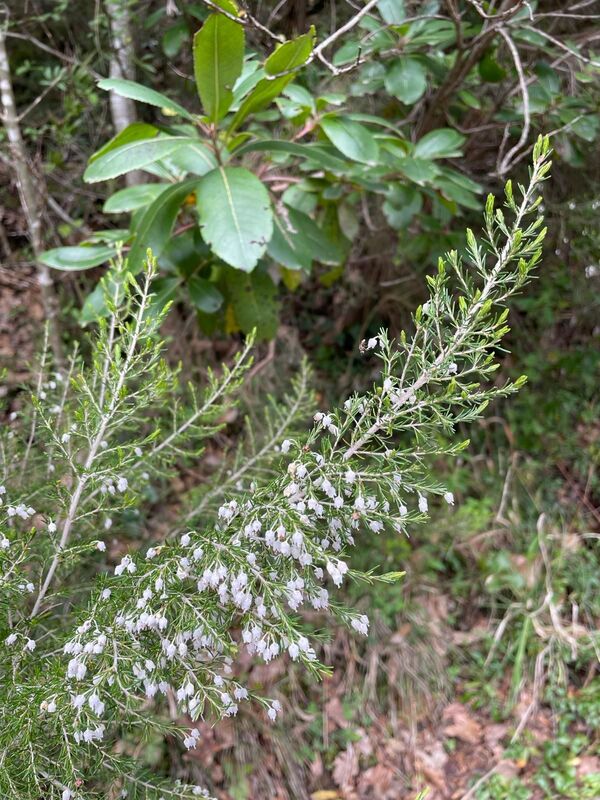
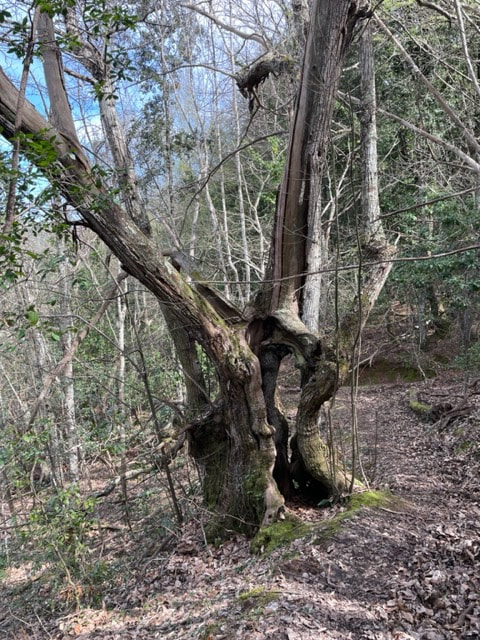
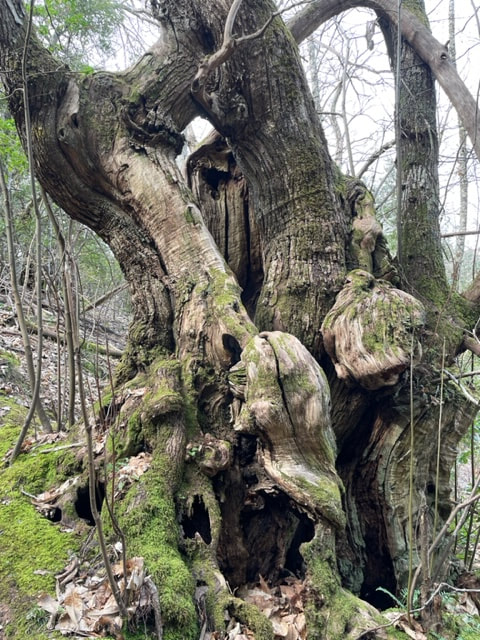
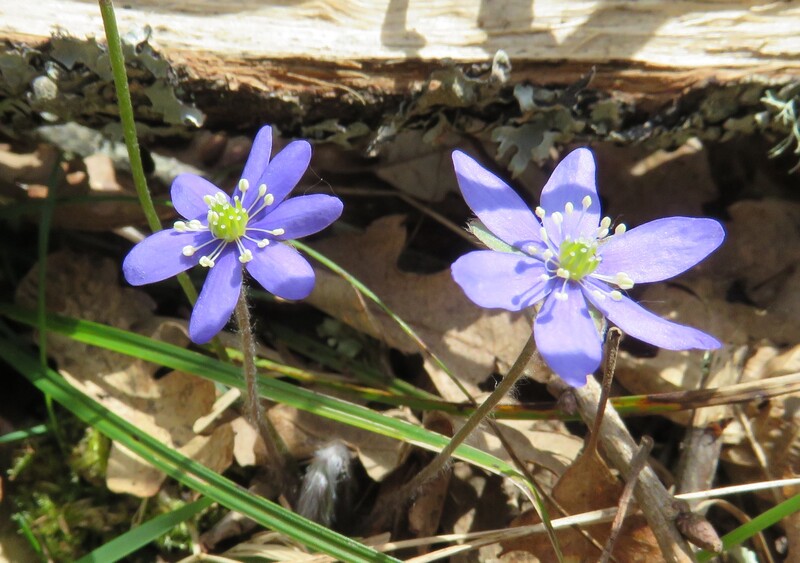
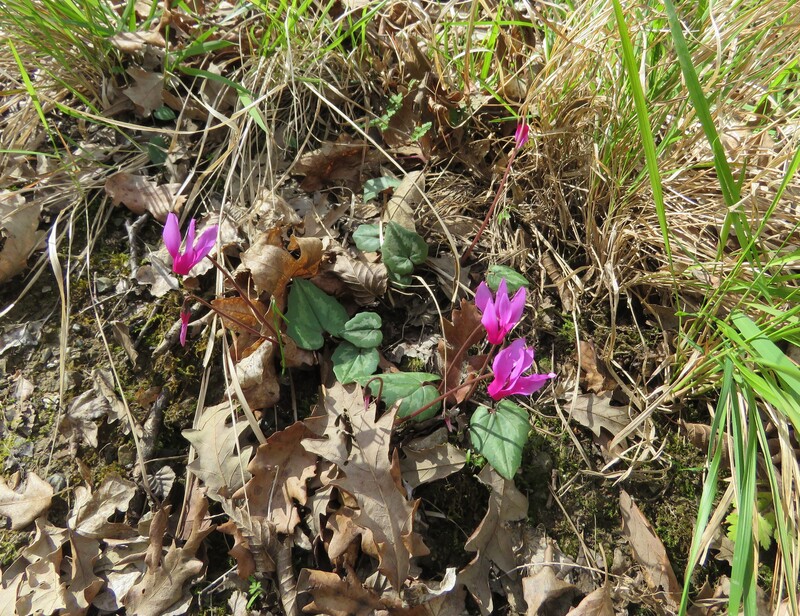
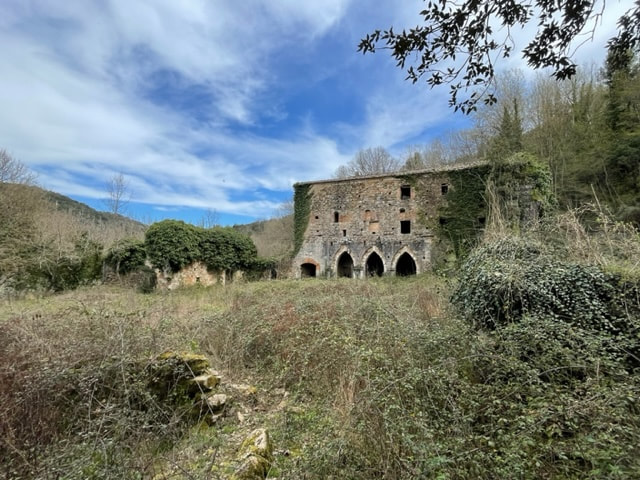
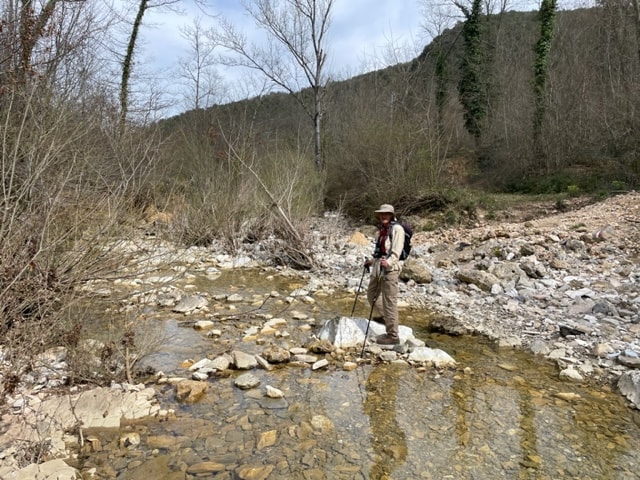
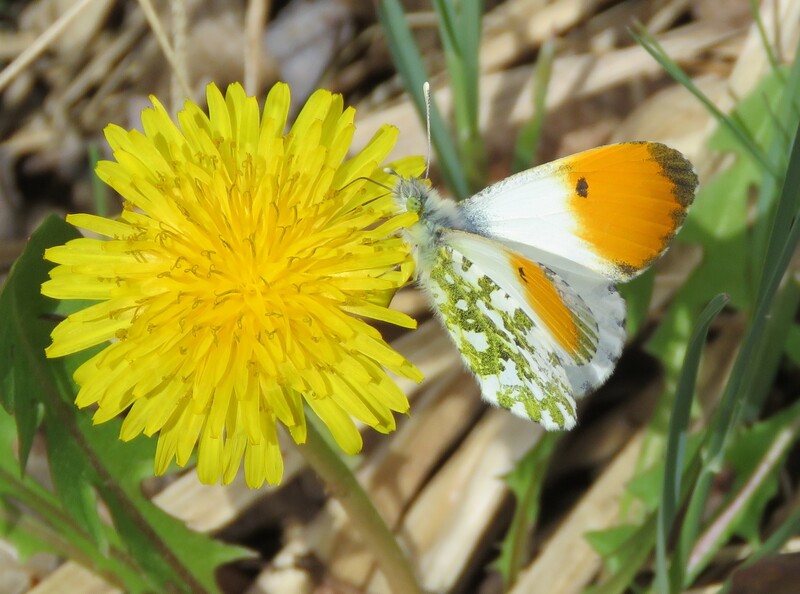

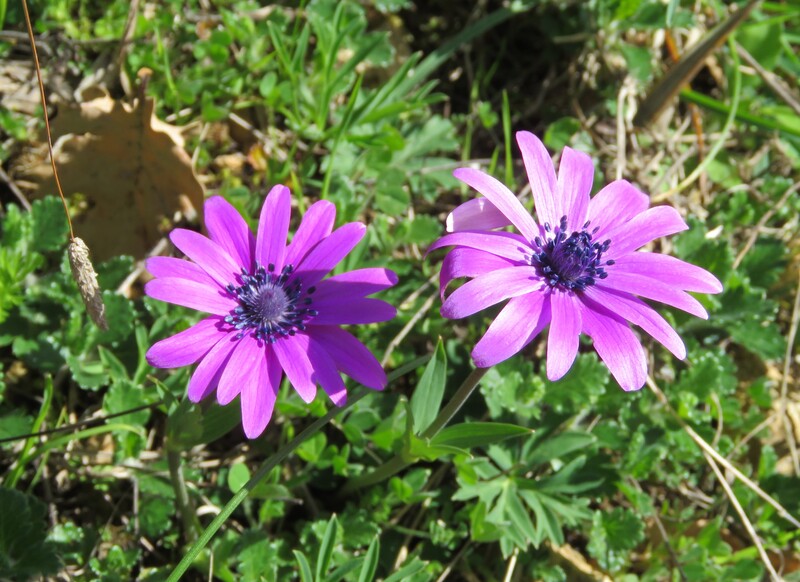
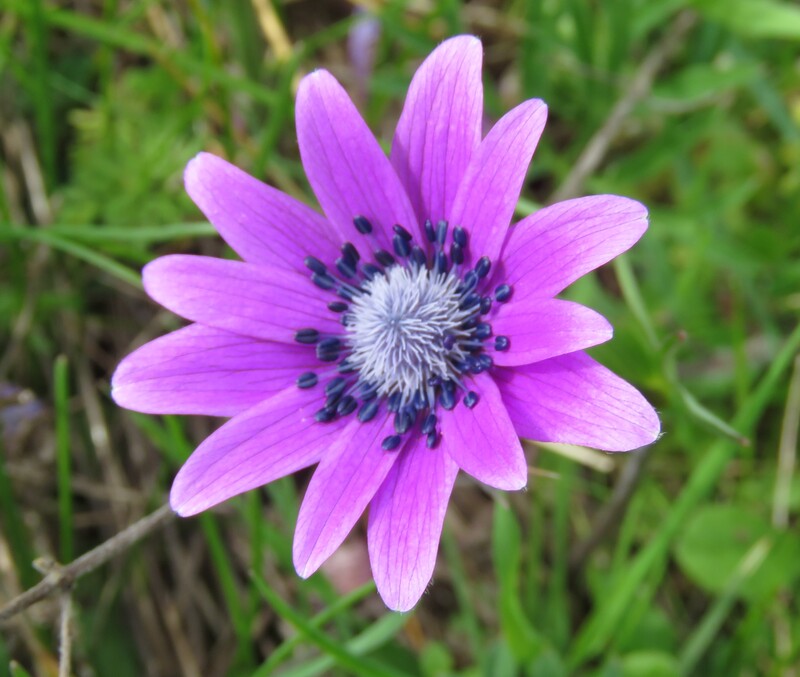
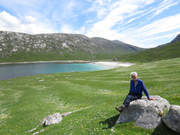
 RSS Feed
RSS Feed